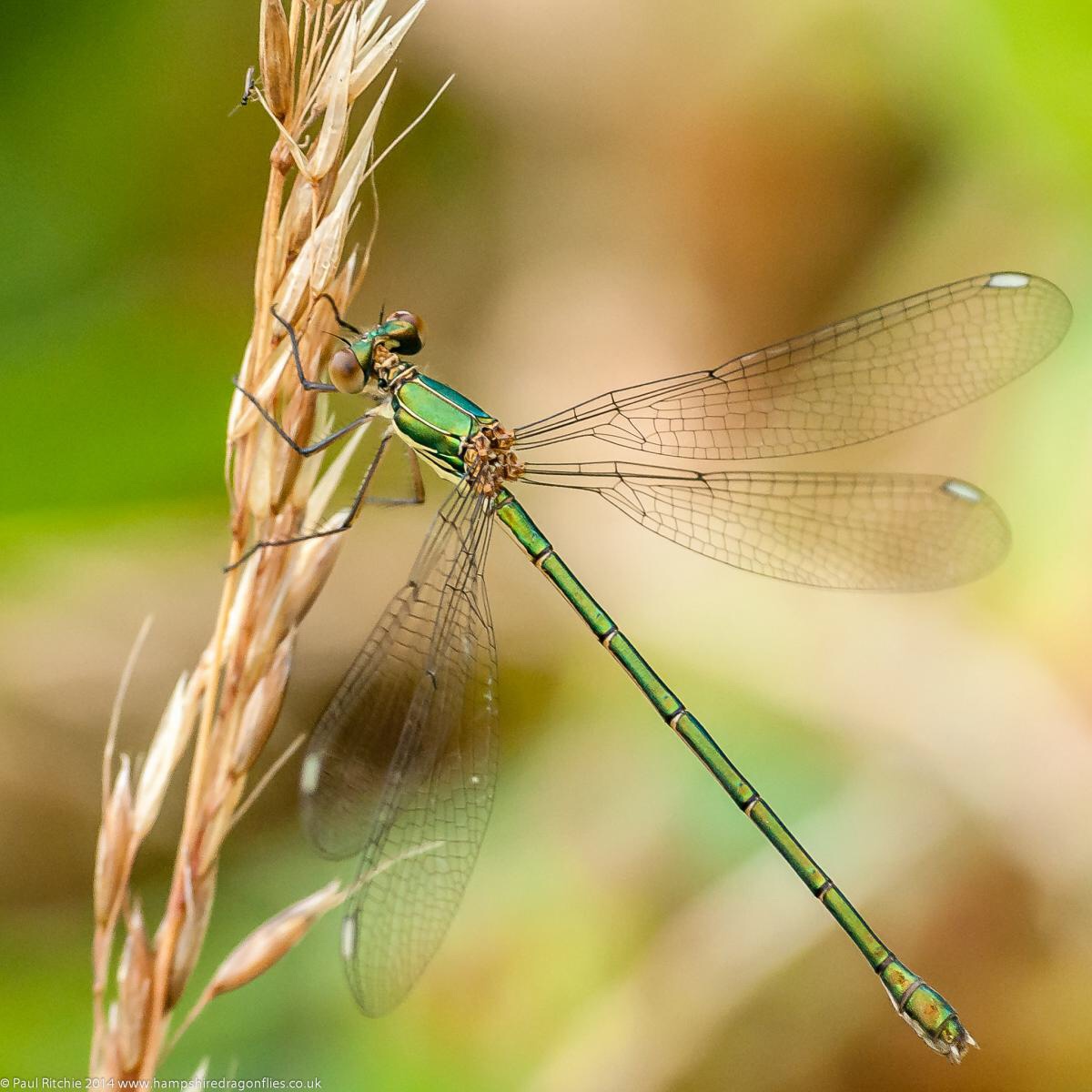I’ve been working on the Hoveton Great Broad Nature Trail for the best part of five months now, yet it’s still surprising me. Before I started I thought my knowledge of wildlife was above average, but it quickly became clear to me that the vast majority of species in the Broads were new to me. And the diversity is almost endless. Attempting to identify things like hoverflies, snails and beetles is akin to Alice falling down the rabbit hole. Happily for me the task was made easier by my colleague out on the trail, Elaine, who has been a warden here for the past 13 years. Over that time she has built up what seems to be an encyclopaedic knowledge of the flora and fauna found around the trail. So whilst working with her yesterday she brought three new beautiful species to my attention, all of which I had never seen before.

The first was courtesy of the moth trap that had been set the night before. Overall the trap was a little disappointing, yielding just two species of micro-moth, Chilo phragmitella and Evergestis pallidata, and a single moth. But this moth was so spectacular it made up for any shortcomings in quantity. Its wings were an off-white canvas spread with black squiggly lines and spots, which were at once both seemingly random but beautifully structured, in a display even the most creative modern artist would be jealous of. A quick flick through the BWP Moths field guide showed we had captured a female black arches (Lymantria monacha), which live in mature woodlands and utilise a whole host of trees as host plants, from oak through to spruce. But this small lady had another surprise in store. On her abdomen, hidden from above by her wings but visible from below, were several beautiful, glossy pink bands set against her black body. The contrast from the monochrome camouflage of her wings was spectacular, and left me wondering what the evolutionary story was behind these colourations, hidden away from view.

The next species is confined to the south-eastern corner of the UK, though even here it was only first recorded in adult form in 2007. This meant it is a novelty not just for me, but for the entire country. The willow emerald damselfly (Chalcolestes viridis) is distinguishable from other emeralds by its light brown ‘pterostigmata’, which are the coloured spots near the end of dragon- and damselfly wings. These are used as counterweights to aid their effortless and unique mode of flight, where the wings twist as they beat therefore following a figure-of-eight motion. I saw this particular individual perching on the tip of a twig above the turf pond, dug out as an example of Victorian peat workings, and now completely covered by frogbit, their vibrant green lily-pad like leaves broken only by a few stems protruding from the water, tipped with small delicate papery white flowers. The willow emerald itself was an exception to the damselfy rule of holding its wings behind its back when at rest, thereby distinguishing it from dragonflies who hold their wings horizontally, as it held them at a 45° angle halfway between a damselfly and a dragonfly pose, obviously striving to be more like its ferocious cousins.
I have, of course, saved the best until last. My first indication that this animal was nearby were the alarm calls of the gulls and the few common terns that still reside around Hoveton Great Broad. From the viewpoint across the water the reason for their cries quickly became clear, as at the far end of the Broad from behind a clump of trees there arose a huge bird of prey, larger than a buzzard or even a marsh harrier, whose long brown wings flapped slowly, its snow white head scanning the water for fish. This was an osprey (Pandion haliaetus), not a bird I had expected to see in the broads, but apparently they use the place as a rest-stop on their long migration south to the coasts of Africa.

The majesty of this bird is hard to overstate, from the way it gracefully cuts through the sky to the heavy regal wingbeats, and the smartness of its plumage. This individual alighted on the top of a dead tree directly across from us, giving me time to admire it, and drink in the privilege of seeing what is still a rare species in the UK.
All that was needed to top my day off was a sighting of an otter – but wildlife watching isn’t rewarding because everything is handed to you on a plate! I’ll take these three and add them to my list, and I’ll feel very content in doing so.
